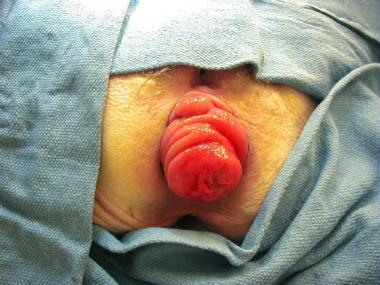 Wirral Surgeon
Excellence for Life
Wirral Surgeon
Excellence for Life
Condition treated
The most important point to remember is that everyone with a bowel problem can be helped and many can be completely cured.
It is never too late to get help with your bowel problems. If you would like some advice on how to approach your GP regarding your bowel problem do get in touch.

Rectal Prolapse
Full-thickness rectal prolapse is defined as protrusion of the full thickness of the rectal wall through the anus.
Backgound
The precise cause of rectal prolapse is not defined; however, as many as 50% of prolapse cases are caused by chronic straining with defecation and constipation. Peaks in occurrence are noted in the fourth and seventh decades of life, and most patients (80-90%) are women.
Rectal Prolapse
Full-thickness rectal prolapse is defined as protrusion of the full thickness of the rectal wall through the anus.
Backgound
The precise cause of rectal prolapse is not defined; however, as many as 50% of prolapse cases are caused by chronic straining with defecation and constipation. Peaks in occurrence are noted in the fourth and seventh decades of life, and most patients (80-90%) are women.

Clinical presentation
Rectal prolapse is associated with:
Treatment
In adult patients, treatment of rectal prolapse is essentially surgical; no specific medical treatment is available. Surgical treatments can be divided into two categories according to the approach used to repair the rectal prolapse: abdominal procedures and perineal procedures.
Abdominal procedures
On the whole, the abdominal procedures have a lower recurrence rate but a higher morbidity. Abdominal repairs are therefore generally performed in younger, healthier patients, whose life expectancy is longer.
Most abdominal procedures are currently performed laparoscopically or robotically:
Perineal procedures
Perineal procedures are easier to perform but have high recurrence rates. Consequently, these are best reserved for older patients with significant co-morbidities and reduced life expectancy.
Perineal procedures for rectal prolapse are: